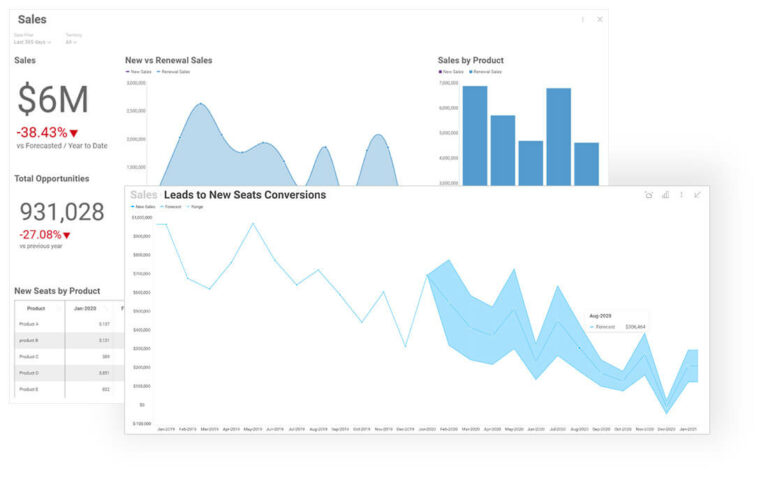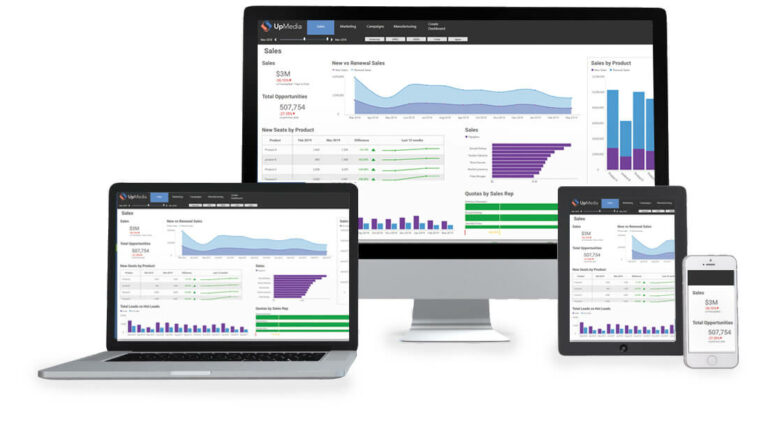
Scriptly Helps Pharmacies Identify Trends in Real Time with Reveal
Business analytics is the review and analysis of data to help drive well-founded decision-making. Companies use analytics to discover the root causes of issues, find opportunities for improvement, and make decisions in hopes of improving key metrics such as customer satisfaction or revenue. Business analytics is often part of continuous improvement initiatives such as Six Sigma, but it can also be an important factor in day-to-day business operations.
Analytics professionals have always been able to tease a great deal of insight out of data, and the more data they have to work with, the better conclusions analysts can draw. But modern business analytics often adds elements of automation and machine learning that make it possible to crunch numbers on increasingly large data sets in shorter periods of time, putting the power of data-based decisions to work for organizations of any size or type.
One of the first steps of putting business analytics to work for your organization is understanding the three major categories of analysis and when you might want to use them.
Descriptive analytics do exactly what they sound like: they describe the state of what is or was. How many employees worked yesterday? How many units were sold last month? What is the average speed of an answer in the call center for this hour? These are all questions descriptive analytics can answer.
In some organizations, this type of analytics is referred to as business intelligence. It’s used to answer questions about what is happening right now and report on KPI metrics. Decision-makers can use reports drawn from descriptive analysis to make decisions about:
Predictive analytics uses existing data and statistical analysis methods to make probability predictions about future outcomes. How many widgets are likely to sell next quarter? How many people do we need to cover the call volumes expected for next month? What is a realistic but challenging goal to set for next year’s revenue? These are the types of questions predictive analysis answers.
In some organizations, when people talk about business analysis, they are primarily referring to predictive analytics. This type of analysis helps leaders understand how to staff and plan appropriately for the future, what types of revenue might be expected, and how to best target marketing approaches to drive more ROI.

Prescriptive analytics help prescribe a potential solution to a question or concern. By using a combination of descriptive and predictive data and prescriptive analysis methods, experienced professionals can offer answers to what-if scenarios. The goal is to use data from past situations to analyze what might happen in the future and offer solutions that are statistically likely to lead to better outcomes.
From automation to better decision-making, business analytics offers a number of benefits that impact employee morale, customer satisfaction, and the bottom line. Here are just a few benefits that good business analytics can offer:
The benefits of data and how you can apply analytics are typically only limited by:
Historically, business analytics were conducted with tools that required very specific skill sets. Statistical analysis might be completed in software such as MiniTab or even Excel, for example, and report writing was done via coding and query languages such as SQL. These tools and skills are all still required and evident today, but business analytics tools have also stepped in to make the day-to-day work of understanding critical data easier.
Today, common applications and tools used by organizations engaging in business analytics can include:

Because business analytics covers such a wide field of work, the skills required for a job in the niche aren’t always the same. Some companies look for someone with statistical analysis skills (and perhaps a degree in statistics). Others may want tech personnel who can manage data warehouses while also writing the right type of reports to fuel the business. Still others are looking for detail-oriented admin employees who can manage reporting and queries through user interfaces built into analytical software solutions.
Whether you’re looking for a job in business analytics or hiring someone to handle this work in your own company, a few common skills are almost always important. They include:
Ultimately, every business engages in analytics to some degree. But typically, the more data and ability to analyze it that you wield, the better your business decision-making serves your company, employees, shareholders, and customers.
Back to Top